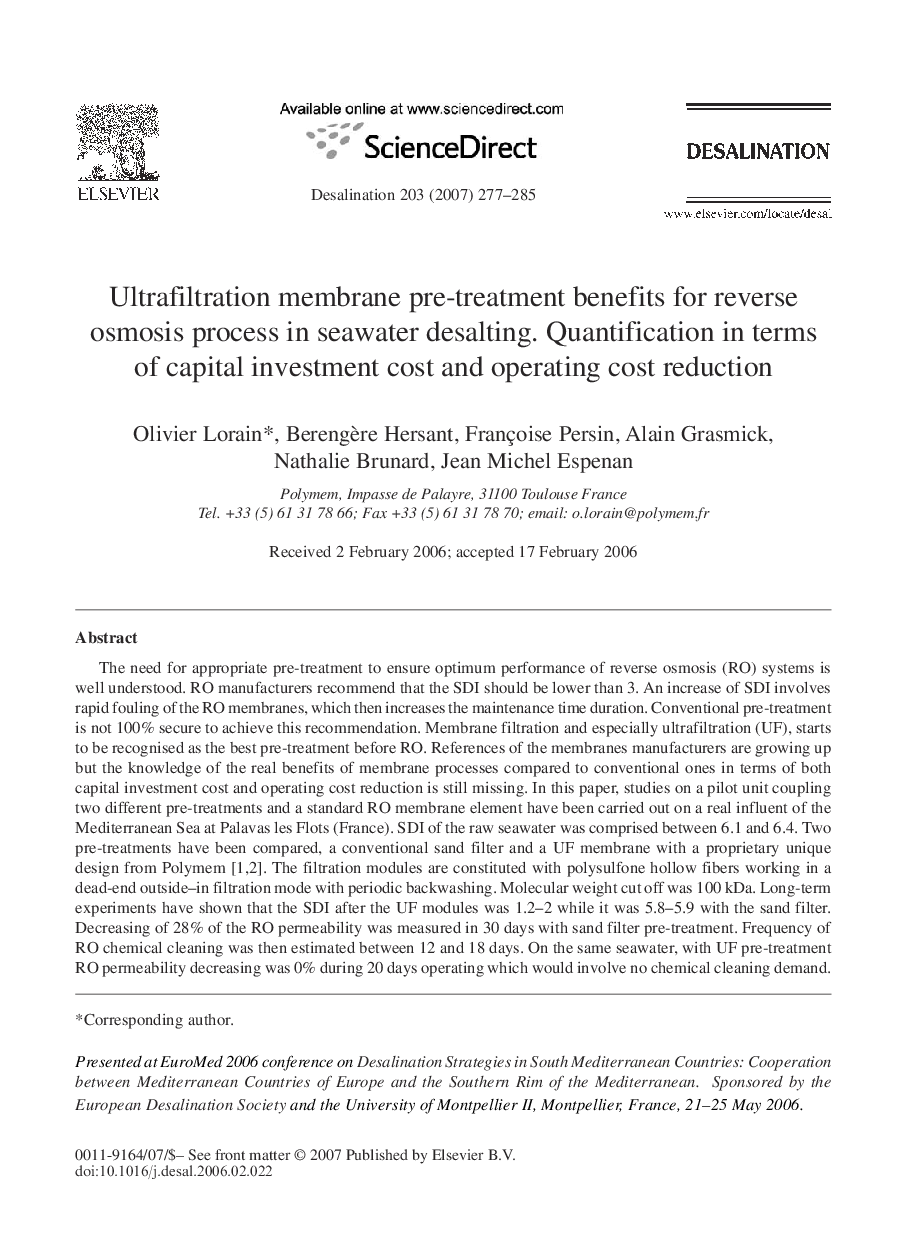| کد مقاله | کد نشریه | سال انتشار | مقاله انگلیسی | نسخه تمام متن |
|---|---|---|---|---|
| 628200 | 1455487 | 2007 | 9 صفحه PDF | دانلود رایگان |

The need for appropriate pre-treatment to ensure optimum performance of reverse osmosis (RO) systems is well understood. RO manufacturers recommend that the SDI should be lower than 3. An increase of SDI involves rapid fouling of the RO membranes, which then increases the maintenance time duration. Conventional pre-treatment is not 100% secure to achieve this recommendation. Membrane filtration and especially ultrafiltration (UF), starts to be recognised as the best pre-treatment before RO. References of the membranes manufacturers are growing up but the knowledge of the real benefits of membrane processes compared to conventional ones in terms of both capital investment cost and operating cost reduction is still missing. In this paper, studies on a pilot unit coupling two different pre-treatments and a standard RO membrane element have been carried out on a real influent of the Mediterranean Sea at Palavas les Flots (France). SDI of the raw seawater was comprised between 6.1 and 6.4. Two pre-treatments have been compared, a conventional sand filter and a UF membrane with a proprietary unique design from Polymem [1,2]. The filtration modules are constituted with polysulfone hollow fibers working in a dead-end outside–in filtration mode with periodic backwashing. Molecular weight cut off was 100 kDa. Long-term experiments have shown that the SDI after the UF modules was 1.2–2 while it was 5.8–5.9 with the sand filter. Decreasing of 28% of the RO permeability was measured in 30 days with sand filter pre-treatment. Frequency of RO chemical cleaning was then estimated between 12 and 18 days. On the same seawater, with UF pre-treatment RO permeability decreasing was 0% during 20 days operating which would involve no chemical cleaning demand. Capital investment cost and operating cost benefits of UF have been estimated. It appears that these costs are comparable to those encountered in drinking water production by membranes.
Journal: Desalination - Volume 203, Issues 1–3, 5 February 2007, Pages 277-285